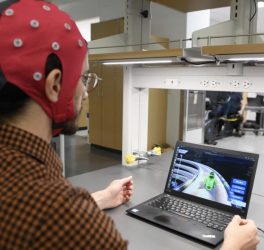
Concerts and festivals in France will offer vibrating vests to attendees with hearing disabilities so they can ‘feel’ the music being played.
Savalaure classical and baroque music festival, taking place in Cantal later this month, will be offering the vests, so those with hearing disabilities can enjoy the music too.
“I think this is a big step forward for these audiences, who are often on the fringes of many cultural events,” Nathalie Perdu, organiser of the Savalaure festival, told franceinfo.
The vests transform low frequencies into vibrations by using an algorithm to turn sounds into pulsations.
Initially, the vests were not designed for this purpose – their original use was to intensify sensation for gamers, cinema-goers and in virtual reality experiences.
Paris-based company Timmpi, which specialises in immersive and inclusive audio technologies, developed the idea to convert this technology into enabling people with hearing disabilities ‘feel’ sound.
The SUBPAC tactile bass technology used in the vests makes use of receptors on the skin, in the muscles, as well as bone conduction.
Marie-Claire Hall, who is profoundly deaf, demonstrated the vest, dancing to the rhythm of a Michael Jackson song.
“Without the vest, I can’t hear the music,” Hall said. “But thanks to the vibrations, I can feel everything. I’m so happy.”
The cost of the vests is pricey – around €1,000 each, so places may have to rely on grants and subsidies for now. However, there are some companies that are renting out the vests for large events.








